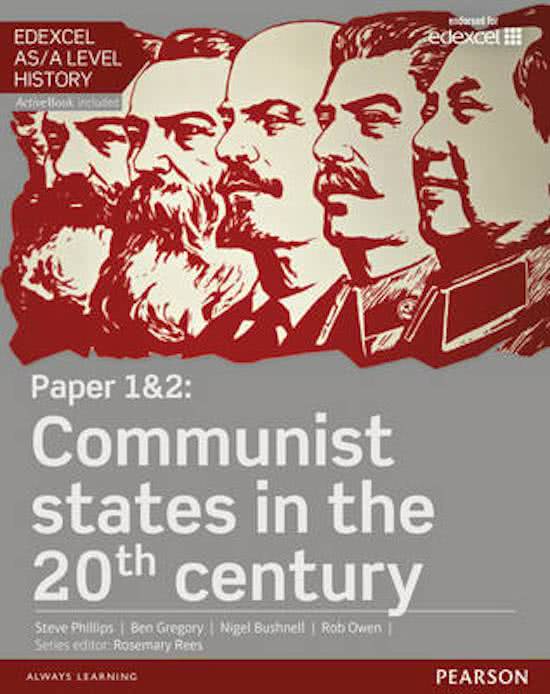THEME ONE: Communist Government in the USSR, 1917-1985
Essay Titles – Essays to plan
1. To what extent did Stalin’s power over the Party change between 1928-1953?
Removal of opponents:
Stalin still had political opponents at the time of seizing power.
Great Terror of 1934-38 increased his power by executing 600,000 members of the
Communist Party and imprisoning 1.2 million.
In 1932, Sergei Kirov defended Ryutin after his critical document of Stalin.
He formed the Union of Marxist Leninists with Bukharin, Zinoviev and Trotsky.
Kirov was murdered in December 1934 and Stalin’s main rival was removed.
The Trial of the 16, 1936, led to the execution of Zinoviev, Kamenev and 14 of their
supporters.
The Trial of the 17, 1937, led to the execution and imprisonment of 17 of Trotsky’s former
supporters.
The Trial of the 21, 1938, led to the execution of Bukharin and many of his supporters.
Total control after WW2:
In 1941, Stalin became Chair of Sovnarkom – the most senior committee.
Stalin’s government in the 1930s had been grossly inefficient because when he purged the
senior levels of the state, the Party and the military, he had sabotaged the effectiveness of
all aspects of the government.
In order to win the war, from 1941, Stalin took the leading position in the state, as well as
the Party, to ensure better co-ordination of government.
As well as becoming Chair of the Council of Ministers, Stalin promoted effective government
during the war in the following ways:
Ended mass terror to help them work more efficiently during war.
Allowed state power to grow – done to let State Ministers make important decisions.
Changed the composition of the Politburo – Ministers joined the Politburo and members of
the Politburo were given important jobs.
This meant that the Politburo increasingly co-ordinated state activity as well as Party activity.
Created the State Defence Committee (GKO).
By shifting the centre of power within the government, Stalin was able to ensure that none
of these senior committees grew to rival him.
Responsible for economic co-ordination and military production and defence during the war.
In 1938, the Politburo was the most senior committee in government.
By 1942, the GKO was the most powerful committee, and after the war, the Council of
Ministers became more powerful.
Rise of Stalin’s rivals:
In 1948, Stalin celebrated his 70s birthday and it was clear, his life was coming to an end.
Two of the main rivals for his position were Beria and Zhdanov.
Beria’s powerbase was in the MVD, the political police.
Whereas Zhdanov was the chief of the Leningrad Party.
Beria encouraged Stalin to purge Leningrad because it contained a group of senior officials,
rivals to Stalin.





